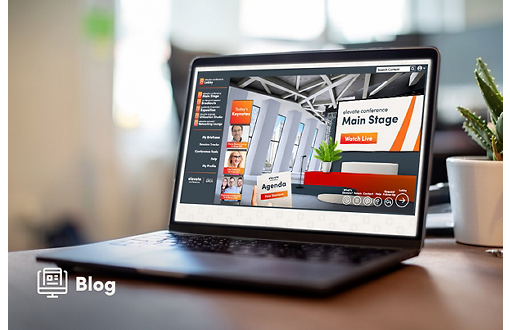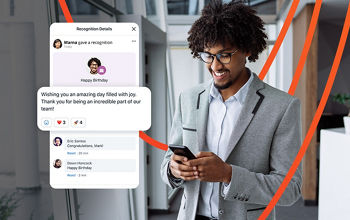resources
Elevate Conference 2021: Top Highlights
December 13, 2021
Elevate Conference was expanded to four days for 2021, giving attendees more resources, sessions, speakers, and highlights than ever before.
Blog Post

2021 was our biggest Elevate Conference ever! By keeping the event an online experience for another year, we expanded the schedule from two days to four, allowing us to add even more speakers, resources, and networking sessions than last year. Attendees could access, watch, and participate all from the comfort of their homes or offices, with content available for 20 days post-conference. We’re excited to share the top highlights that give you a peek into our annual Elevate client conference:
1. Top Challenges and Topics for HR Professionals
After surviving everything 2020 dished out, one of the biggest questions for HR professionals is what to focus on now. To help answer this question, the conference centered around five topics:
- The New Modern Workplace: How to navigate ever-changing workplace technology and the generational gaps in technical literacy among today’s workforce, while also providing a safe environment for those working remotely, in-person, or both
- Employee Engagement and DE&I: Best practices and industry standards for demonstrating a company’s good citizenship with the local community and fostering a healthy, enriching corporate culture
- Regulatory Compliance: Legislative actions from 2020 and 2021 at the federal, state, and local levels that companies of all sizes need to know
- Strategic HR: Using the Agile philosophy to deliver precise, high-impact goals and activities that ultimately make the organization’s big dreams a reality
- Data and Technology: Informing your decision-making process with data-driven insights for today’s growing remote workforces
2. Solutions to Keep the Modern Workforce Engaged
One of the biggest challenges HR professionals face today is engaging and connecting with remote employees. How do these employees feel about their work or the company? How do they interact with, support, or recognize each other’s accomplishments? The answer to these crucial questions can impact your organization’s office environment as well as its virtual environment. As part of our Modern Workforce Solutions (MWS), attendees learned how the Modern Workforce Index (MWI) gives you that insight into employee sentiment, performance metrics, and engagement, all neatly packaged in an easy-to-read dashboard. It even provides you with custom, actionable recommendations based on your unique scores.
3. Learning and Sharing Best Practices
To help attendees maximize their time each day, we organized several Session Tracks around key topics or practices. These tracks allowed them to plan a custom agenda of live sessions for learning new ideas with meet ups for sharing current ones with others, all the while focusing on whichever subjects are most crucial to your success:
- PCTY Learning: How to best use our product suite, from fundamentals to more advanced techniques
- Professional Development: Key leadership skills to be effective in your job, including communications, change management, conflict resolution, and more
- Compliance: The latest compliance news, changes, and best practices
- Thought Leadership: Current trends and best practices for being a better HR leader
- Payroll Critical: What’s necessary to maximize the payroll administrator role and how our products can help
- New to Paylocity: An overview of our product suite and the core ways we partner with our clients
4. Expanded Elevate Offerings
At this year’s conference, we introduced our new, monthly Elevate offerings that each address a different topic or role, giving clients the chance to learn throughout the year in bite-sized portions while waiting for next year’s conference. Elevate Connect gatherings allow clients to meet and chat with others working in similar roles or industries to share how they use Paylocity products in their organizations. Elevate Engage gatherings focus on specific Paylocity products and show clients how to best maximize that product for their organization. Finally, Elevate Workshops help clients resolve larger business challenges with the entire Paylocity Product Suite. Engage and Connect gatherings last one hour and are hosted via Zoom, while Workshops go a full day and use the same platform as Elevate Conference.
5. Learning While Giving Back
One of the most interactive and entertaining additions to Elevate Conference 2021 was the new virtual trivia event co-hosted by PCTY Gives and the nonprofit organization Girlstart, whose aim is to nurture young girls' interest and engagement in STEM subjects. Answering questions directly from the Girlstart curriculum, attendees were able to enjoy some friendly competition while also supporting a good cause.
Thank you to everyone who attended Elevate Conference 2021! If you couldn’t make it, or want a recap of the sessions, check out our wrap-up video. Be on the lookout for updates and registration details for our monthly Elevate gatherings or Elevate Conference 2022!


